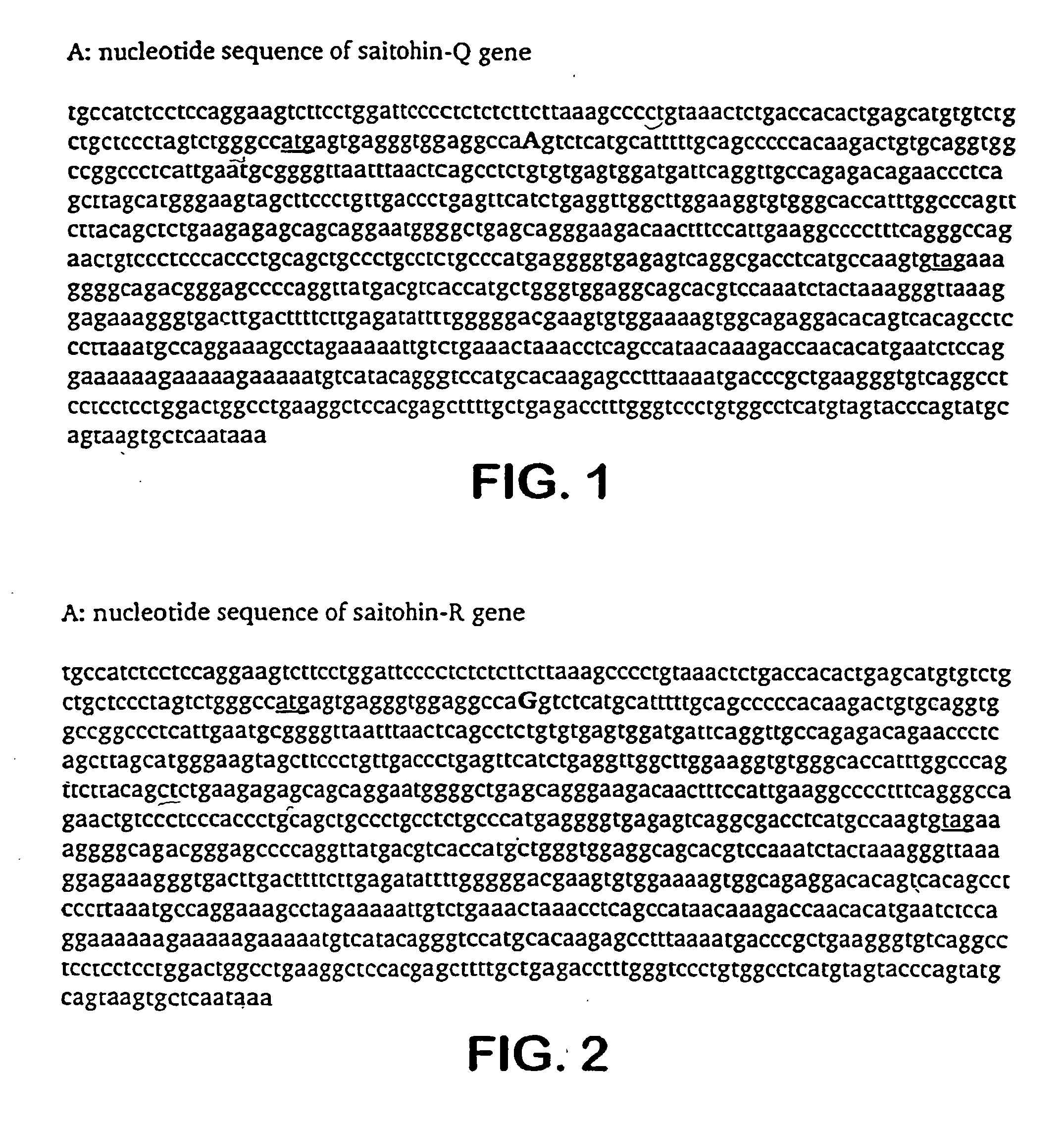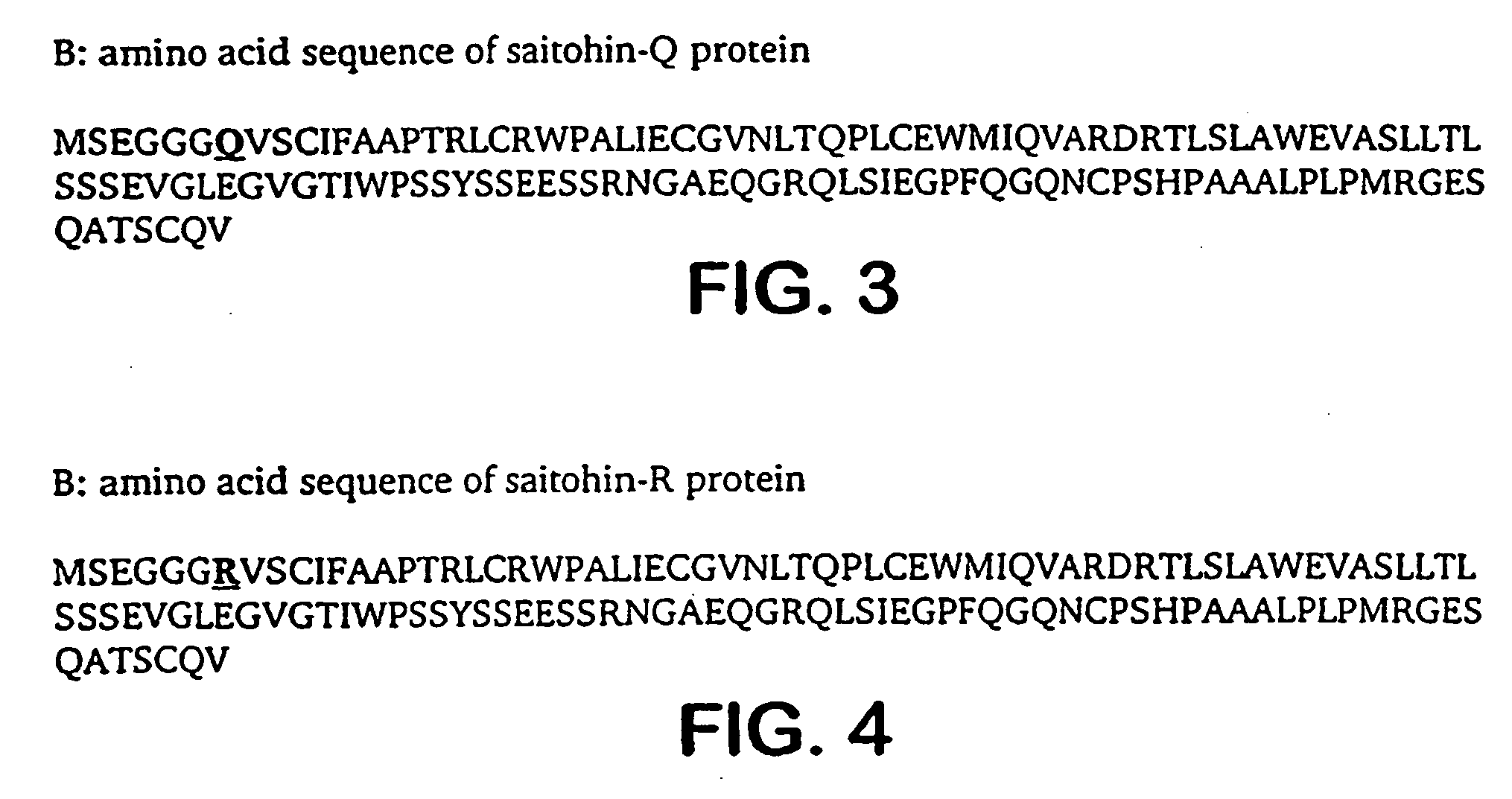Novel saitohin gene and uses of same
a technology of saitohin gene and saitohin, which is applied in the field of new saitohin gene, can solve the problems of inability to cure alzheimer's disease, insufficient, and inconvenient, and achieve the effect of high stringency conditions
- Summary
- Abstract
- Description
- Claims
- Application Information
AI Technical Summary
Benefits of technology
Problems solved by technology
Method used
Image
Examples
Embodiment Construction
class="d_n">[0026] The present invention is directed to a novel gene, saitohin (STH), that is located on chromosome 17, within an intron of the gene encoding the microtubule-associated protein, tau. As disclosed herein, the saitohin gene exists in at least two forms, or alleles, in the human population. In one form, referred to herein as “saitohin-Q (STH-Q)”, the 126th nucleotide is A, which results in a Q (glutamine) at position seven of the STH-Q isoform of the STH protein. In the second form of STH, referred to herein as “saitohin-R (STH-R)”, the 126th nucleotide is G, which results in an R (arginine) at position seven of the STH-R isoform of the STH protein.
[0027] Accordingly, the present invention provides a saitohin (STH) gene, and an isolated nucleic acid sequence encoding STH protein. The STH gene, and the nucleic acid sequence encoding STH protein, include both the STH-Q and STH-R alleles. The STH gene may be an “endogenous” STH gene, which is one that originates or arises ...
PUM
| Property | Measurement | Unit |
|---|---|---|
| pH | aaaaa | aaaaa |
| temperature | aaaaa | aaaaa |
| temperature | aaaaa | aaaaa |
Abstract
Description
Claims
Application Information
 Login to View More
Login to View More - R&D
- Intellectual Property
- Life Sciences
- Materials
- Tech Scout
- Unparalleled Data Quality
- Higher Quality Content
- 60% Fewer Hallucinations
Browse by: Latest US Patents, China's latest patents, Technical Efficacy Thesaurus, Application Domain, Technology Topic, Popular Technical Reports.
© 2025 PatSnap. All rights reserved.Legal|Privacy policy|Modern Slavery Act Transparency Statement|Sitemap|About US| Contact US: help@patsnap.com



